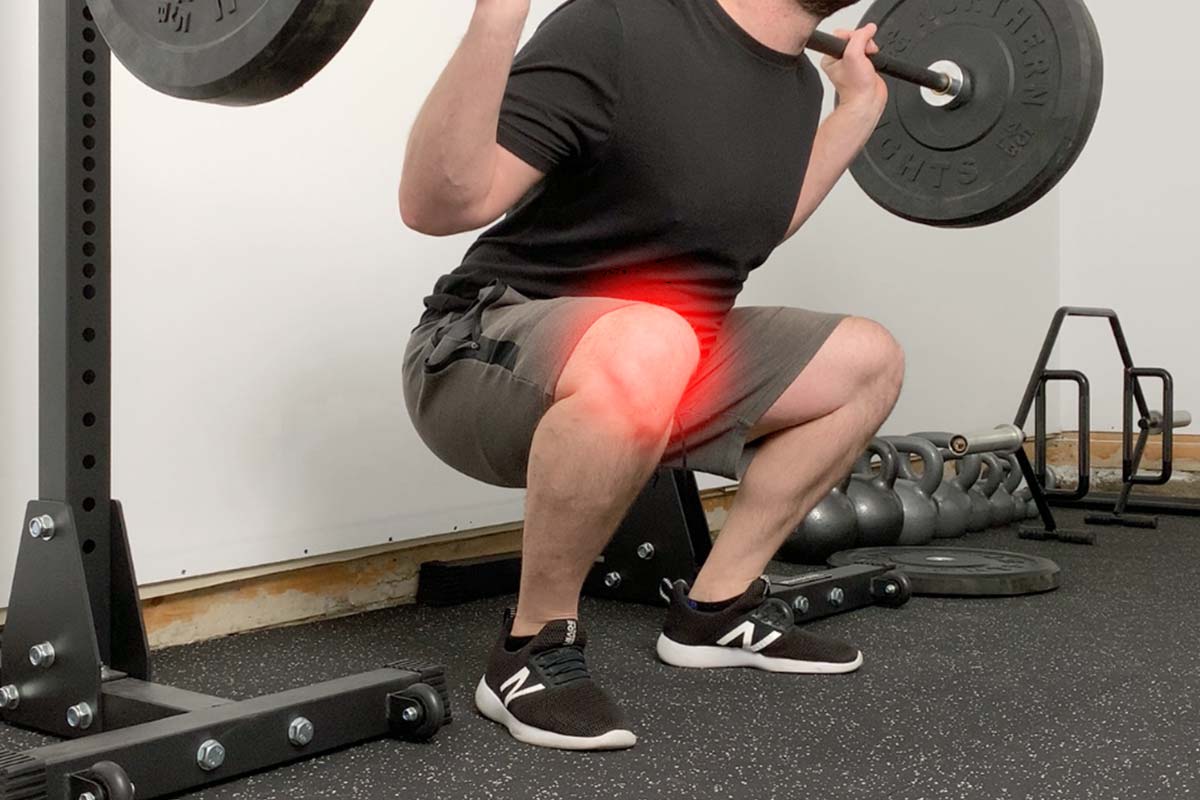Unmasking the Culprit: Why Your Knees Hurt When You Squat
Squatting, a fundamental human movement, is a cornerstone of many exercise routines and daily activities. However, knee pain during squats can be disheartening and disrupt your workout or daily life. This comprehensive guide delves into the various reasons behind knee pain when squatting, explores preventive measures, and offers a helpful FAQ section to address your concerns.
Understanding the Source of Knee Pain
Knee pain during squats can arise from various factors. Here’s a breakdown of some common culprits:
- Improper Form: Squatting with incorrect technique puts undue stress on your knees. Knees caving inward, excessive forward lean, or an overly rounded back can all contribute to pain.
- Weak Muscles: Strong leg and core muscles are crucial for proper squat mechanics. Weakness in your quadriceps, hamstrings, glutes, or core can lead to imbalances and knee strain during squats.
- Previous Injuries: Past knee injuries like ligament tears, meniscus damage, or bursitis can resurface as pain during squats, especially if proper healing and rehabilitation haven’t occurred.
- Arthritis: Osteoarthritis, the wear and tear of joint cartilage, can cause knee pain, stiffness, and inflammation, particularly noticeable during weight-bearing activities like squats.
- Pes Anserinus Bursitis: This inflammation of the bursa (fluid-filled sac) near your inner knee can cause pain when squatting due to the pressure placed on the tendons in that area.
- Patellofemoral Pain Syndrome (PFPS): Often referred to as “runner’s knee,” PFPS is characterized by pain around the kneecap, which can worsen during activities like squatting.
Diagnosing the Cause
While a physical examination by a doctor or physiotherapist is usually sufficient for diagnosis, in some cases, additional tests might be needed. These could include:
- X-rays: To visualize bones and identify any bony abnormalities.
- MRI scans: To examine soft tissues like ligaments and cartilage for tears or damage.
- Ultrasound: To assess tendons and bursae for inflammation.
Finding Relief: Treatment Options
The treatment for knee pain when squatting depends on the underlying cause. Here are some common approaches:
- Addressing Form: A healthcare professional can analyze your squat technique and provide corrective exercises to improve form and prevent further strain on your knees.
- Muscle Strengthening: Exercises targeting your quadriceps, hamstrings, glutes, and core can improve muscle strength and stability, reducing stress on your knees.
- Rest and Ice Therapy: Resting from aggravating activities and applying ice packs to the affected area can help reduce inflammation and pain.
- Physical Therapy: A personalized physical therapy program can address muscle imbalances, improve flexibility, and strengthen the muscles that support your knee joint.
- Medication: Anti-inflammatory medications like ibuprofen can help manage pain and inflammation.
- Injections: In some cases, corticosteroid injections might be used to reduce inflammation in specific areas. (Note: this should only be done under a doctor’s supervision)
- Surgery: In severe cases, surgery might be necessary to repair damaged ligaments, meniscus tears, or address advanced arthritis.
Preventing Knee Pain During Squats
Here are some preventive measures to keep your knees healthy when squatting:
- Warm-up and Cool-down: Always perform dynamic stretches and light cardio before squats to prepare your muscles and joints. Similarly, cool down with static stretches to improve flexibility and reduce post-workout soreness.
- Maintain Proper Form: Focus on squatting with proper technique, keeping your knees aligned with your toes, your core engaged, and your back straight. Don’t squat deeper than where your hips are parallel to the ground.
- Gradual Progression: Start with bodyweight squats and gradually increase weight or difficulty as your strength improves. Avoid overloading yourself to prevent injury.
- Listen to Your Body: Take rest days and avoid pushing through pain. If you experience sharp or persistent pain, stop squatting and consult a healthcare professional.
- Strengthen Supporting Muscles: Regularly perform exercises that strengthen your quadriceps, hamstrings, glutes, and core muscles to provide optimal support for your knees.
- Maintain a Healthy Weight: Excess weight puts additional stress on your knees. Losing weight, if necessary, can significantly reduce knee strain.
FAQ on Knee Pain When Squatting
Q: Can squatting make my knees stronger?
Properly performed squats can indeed strengthen the muscles that support your knees, leading to improved joint stability and reduced risk of injury.
Q: What if I have knee pain, but I still want to squat?
If you experience knee pain during squats, it’s crucial to consult a healthcare professional first.

